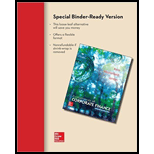
Fundamentals of Corporate Finance (Special Edition for Rutgers Business School)
11th Edition
ISBN: 9781308509853
Author: Ross, Westerfield, Jordan
Publisher: McGraw Hill
expand_more
expand_more
format_list_bulleted
Question
Chapter 26, Problem 6CRCT
Summary Introduction
To discuss: The advantages and disadvantages of a taxable merger, the fundamental determinant of the status of taxes in mergers and whether leveraged buyouts can be non-taxable or taxable
Introduction:
A merger is the total absorption of one company by another, where the firm that is acquiring retains its uniqueness and it terminates the other to exist as an individual entity.
Expert Solution & Answer
Want to see the full answer?
Check out a sample textbook solution
Students have asked these similar questions
Dividend problem . Solve plz
Finance prob.
Need abs
Chapter 26 Solutions
Fundamentals of Corporate Finance (Special Edition for Rutgers Business School)
Ch. 26.1 - Prob. 26.1ACQCh. 26.1 - Prob. 26.1BCQCh. 26.2 - Prob. 26.2ACQCh. 26.2 - Prob. 26.2BCQCh. 26.3 - Prob. 26.3ACQCh. 26.3 - Prob. 26.3BCQCh. 26.4 - Prob. 26.4ACQCh. 26.4 - Prob. 26.4BCQCh. 26.5 - Prob. 26.5ACQCh. 26.5 - Prob. 26.5BCQ
Ch. 26.6 - Prob. 26.6ACQCh. 26.6 - Prob. 26.6BCQCh. 26.7 - Prob. 26.7ACQCh. 26.7 - Prob. 26.7BCQCh. 26.8 - Prob. 26.8ACQCh. 26.8 - Prob. 26.8BCQCh. 26.9 - Prob. 26.9ACQCh. 26 - Prob. 26.3CTFCh. 26 - What factors should be considered when deciding...Ch. 26 - Prob. 1CRCTCh. 26 - Prob. 2CRCTCh. 26 - Prob. 3CRCTCh. 26 - Prob. 4CRCTCh. 26 - Prob. 5CRCTCh. 26 - Prob. 6CRCTCh. 26 - Prob. 7CRCTCh. 26 - Prob. 8CRCTCh. 26 - Prob. 9CRCTCh. 26 - Prob. 10CRCTCh. 26 - Prob. 1QPCh. 26 - Prob. 2QPCh. 26 - Prob. 3QPCh. 26 - Prob. 4QPCh. 26 - Prob. 5QPCh. 26 - Prob. 6QPCh. 26 - Prob. 7QPCh. 26 - Prob. 8QPCh. 26 - Cash versus Stock as Payment [LO3] In the previous...Ch. 26 - Prob. 10QPCh. 26 - Prob. 11QPCh. 26 - Prob. 12QPCh. 26 - Prob. 13QPCh. 26 - Prob. 14QPCh. 26 - Prob. 1MCh. 26 - Prob. 2MCh. 26 - Prob. 3MCh. 26 - Prob. 4M
Knowledge Booster
Similar questions
- Company A has a capital structure of $80M debt and $20M equity. This year, the company reported a net income of $17M. What is Company A's return on equity?* 117.6% 21.3% 85.0% 28.3%arrow_forward12. Which of the following is the formula to calculate cost of capital?* Total assets/Net debt x Cost of debt + Total assets/Equity x Cost of equity Net debt/Equity x Cost of debt + Equity/Net debt x Cost of equity Net debt x Cost of debt + Equity x Cost of equity Net debt/Total assets x Cost of debt + Equity/Total assets x Cost of equity .arrow_forwardno ai .What is the enterprise value of a business?* The market value of equity of the business The book value of equity of the business The entire value of the business without giving consideration to its capital structure The entire value of the business considering its capital structurearrow_forward
arrow_back_ios
SEE MORE QUESTIONS
arrow_forward_ios
Recommended textbooks for you
 EBK CONTEMPORARY FINANCIAL MANAGEMENTFinanceISBN:9781337514835Author:MOYERPublisher:CENGAGE LEARNING - CONSIGNMENTBusiness/Professional Ethics Directors/Executives...AccountingISBN:9781337485913Author:BROOKSPublisher:Cengage
EBK CONTEMPORARY FINANCIAL MANAGEMENTFinanceISBN:9781337514835Author:MOYERPublisher:CENGAGE LEARNING - CONSIGNMENTBusiness/Professional Ethics Directors/Executives...AccountingISBN:9781337485913Author:BROOKSPublisher:Cengage Intermediate Financial Management (MindTap Course...FinanceISBN:9781337395083Author:Eugene F. Brigham, Phillip R. DavesPublisher:Cengage Learning
Intermediate Financial Management (MindTap Course...FinanceISBN:9781337395083Author:Eugene F. Brigham, Phillip R. DavesPublisher:Cengage Learning

EBK CONTEMPORARY FINANCIAL MANAGEMENT
Finance
ISBN:9781337514835
Author:MOYER
Publisher:CENGAGE LEARNING - CONSIGNMENT

Business/Professional Ethics Directors/Executives...
Accounting
ISBN:9781337485913
Author:BROOKS
Publisher:Cengage



Intermediate Financial Management (MindTap Course...
Finance
ISBN:9781337395083
Author:Eugene F. Brigham, Phillip R. Daves
Publisher:Cengage Learning
